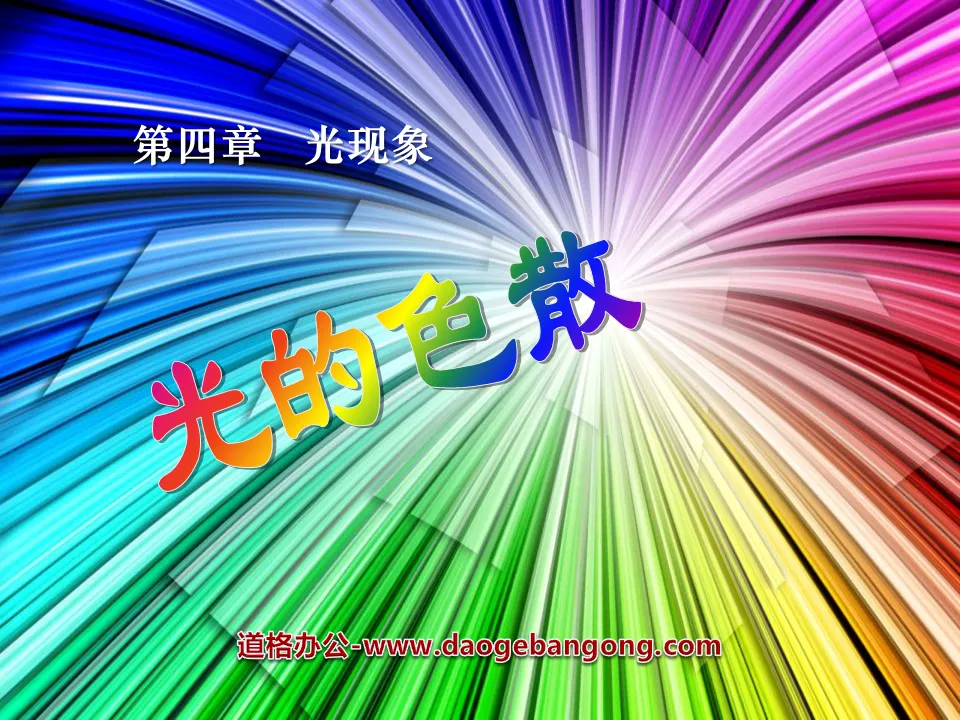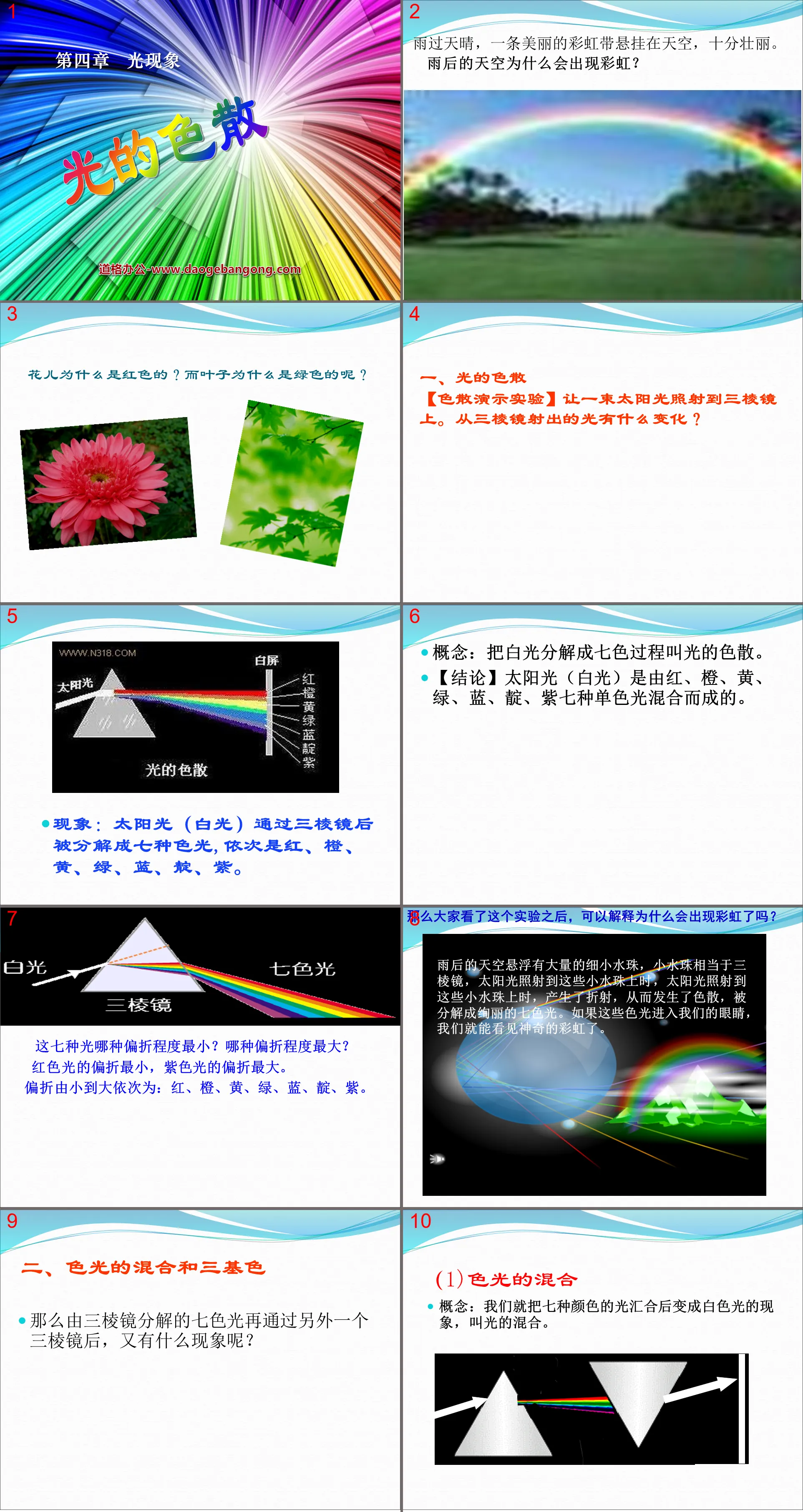People's Education Edition Physics for Grade 8, Volume 2
People's Education Edition Physics for Grade 8, Volume 1
People's Education Edition Ninth Grade Physics Complete Book
Shanghai Science Edition Ninth Grade Physics
Shanghai Science Edition 8th Grade Physics
Lu Jiao Edition Ninth Grade Physics Volume 2
Beijing Normal University Ninth Grade Physics Volume 1
Lu Ke Edition High School Physics Compulsory Course One
Beijing Normal University eighth grade physics volume one
Lu Jiao Edition Ninth Grade Physics Volume 1
Guangdong and Shanghai Edition Ninth Grade Physics Volume 1
People's Education Press High School Physics Compulsory Course II
Beijing Normal University Ninth Grade Physics Volume 2
Lu Jiao Edition Eighth Grade Physics Volume 2
Lu Jiao edition eighth grade physics volume 1
Guangdong and Shanghai Edition Ninth Grade Physics Volume 2

| Category | Format | Size |
|---|---|---|
| People's Education Edition Physics for Grade 8, Volume 1 | pptx | 6 MB |
Description
"Dispersion of Light" Light Phenomenon PPT Courseware 3
1. Dispersion of light
[Dispersion Demonstration Experiment] Let a beam of sunlight shine on a prism. What happens to the light emerging from the prism?
Phenomenon: Sunlight (white light) is decomposed into seven colors of light after passing through a prism, which are red, orange, yellow, green, blue, indigo, and violet.
Concept: The process of decomposing white light into seven colors is called dispersion of light.
[Conclusion] Sunlight (white light) is a mixture of seven monochromatic lights: red, orange, yellow, green, blue, indigo, and violet.
Which of these seven types of light has the smallest deflection? Which deflection is greatest?
Red light has the smallest deflection, and violet light has the largest deflection.
The deflections from small to large are: red, orange, yellow, green, blue, indigo, and purple.
2. Mixing of color lights and three primary colors
So what happens after the seven-color light decomposed by a triangular prism passes through another triangular prism?
(1) Mixing of colored lights
Concept: We call the phenomenon of combining seven colors of light into white light called the mixing of light.
TV screens and computer screens are covered with fluorescent dots. These dots emit light in three colors: red, green, and blue. Why are these three colors used? Instead of using other colors?
(2) The “three primary colors” of light
Experimental research by scientists has shown that the three colors of red, green, and blue light in nature cannot be mixed with light of other colors.
Other colors of light can be obtained by properly mixing red, green, and blue.
Concept: Therefore, the three colors of red, green and blue are called the three primary colors of light.
(3) The “three primary colors” of pigments
Similar to light, pigments also have three colors that cannot be mixed with other colors, and these three colors can be mixed into different colors in different proportions. They are red, yellow and blue respectively. In order to distinguish them from the three primary colors of light, we call these three colors of pigments the three primary colors of pigments.
The three primary colors of pigments: red, yellow, and blue.
Question: If I illuminate a red object with blue light, what color will the object appear?
After studying the previous content, who can answer the following questions?
Why are the flowers red? Why are green leaves green again?
Since the flower is red and opaque, it absorbs light of other colors and reflects red light. The red light enters our eyes, so the flower appears red.
In the same way, because green leaves are green and opaque, they absorb light of other colors and reflect green light. Green light enters our eyes, so green leaves appear green.
practise:
1. Sunlight can be decomposed into ____________ seven colors of light.
2. The color of an object that can reflect light of various colors is: ( )
A. White. B. Colorless. C. Black. D. This color does not exist.
3. In the absence of any other lighting, the green light emitted by the stage spotlight shines on the actor wearing a white top and red skirt. The audience sees her ( )
A. Whole body is green
B. The top is green and the skirt does not change color
C. The top is green and the skirt is purple
D. The top is green and the skirt is black
Keywords: light phenomenon teaching courseware, light dispersion teaching courseware, People's Education Edition eighth grade physics PPT courseware download, eighth grade physics slide courseware download, light phenomenon PPT courseware download, light dispersion PPT courseware download, .PPT format;
For more information about the "Light Phenomenon Dispersion of Light" PPT courseware, please click the "Light Phenomenon ppt Dispersion of Light ppt" tag.
"Dispersion of Light" Light Phenomenon PPT Courseware 10:
"Dispersion of Light" Light Phenomenon PPT Courseware 10 1. Dispersion Question: How is a rainbow formed? Answer: There are a large number of tiny water droplets suspended in the sky after a rain. When sunlight hits these small water droplets, dispersion occurs and is broken down into brilliant seven-color light. So sometimes I...
"Dispersion of Light" Light Phenomenon PPT Courseware 9:
"Dispersion of Light" Light Phenomenon PPT Courseware 9 Review the past and learn the new 1. When light is incident from the air into the glass obliquely, the refracted light is deflected in the direction of the ______ normal. (fill in closer or farther away) 2. A beam of light is incident obliquely to Draw the refraction of light on a glass prism (as shown below). Teaching..
"Dispersion of Light" Colorful Light PPT Courseware 4:
"Dispersion of Light" Colorful Light PPT Courseware 4 1. Experimental study on the dispersion of light: Animation demonstration: Think about it: How many colors are the sunlight mixed with? The experiment shows that the sunlight can be decomposed into red and orange , yellow, green, blue, indigo and purple seven colors of light. Why is the sky...
File Info
Update Time: 2024-10-25
This template belongs to Physics courseware People's Education Edition Physics for Grade 8, Volume 1 industry PPT template
"Dispersion of Light" Light Phenomenon PPT Courseware 3 Simple campus recruitment activity planning plan summary enterprise and institution recruitment publicity lecture PPT template is a general PPT template for business post competition provided by the manuscript PPT, simple campus recruitment activity planning plan summary enterprise and institution recruitment promotion Lecture PPT template, you can edit and modify the text and pictures in the source file by downloading the source file. If you want more exquisite business PPT templates, you can come to grid resource. Doug resource PPT, massive PPT template slide material download, we only make high-quality PPT templates!
Tips: If you open the template and feel that it is not suitable for all your needs, you can search for related content "Dispersion of Light" Light Phenomenon PPT Courseware 3 is enough.
How to use the Windows system template
Directly decompress the file and use it with office or wps
How to use the Mac system template
Directly decompress the file and use it Office or wps can be used
Related reading
For more detailed PPT-related tutorials and font tutorials, you can view: Click to see
How to create a high-quality technological sense PPT? 4 ways to share the bottom of the box
Notice
Do not download in WeChat, Zhihu, QQ, built-in browsers, please use mobile browsers to download! If you are a mobile phone user, please download it on your computer!
1. The manuscript PPT is only for study and reference, please delete it 24 hours after downloading.
2. If the resource involves your legitimate rights and interests, delete it immediately.
3. Contact information: service@daogebangong.com
"Dispersion of Light" Light Phenomenon PPT Courseware 3, due to usage restrictions, it is only for personal study and reference use. For commercial use, please go to the relevant official website for authorization.
(Personal non-commercial use refers to the use of this font to complete the display of personal works, including but not limited to the design of personal papers, resumes, etc.)
Preview










